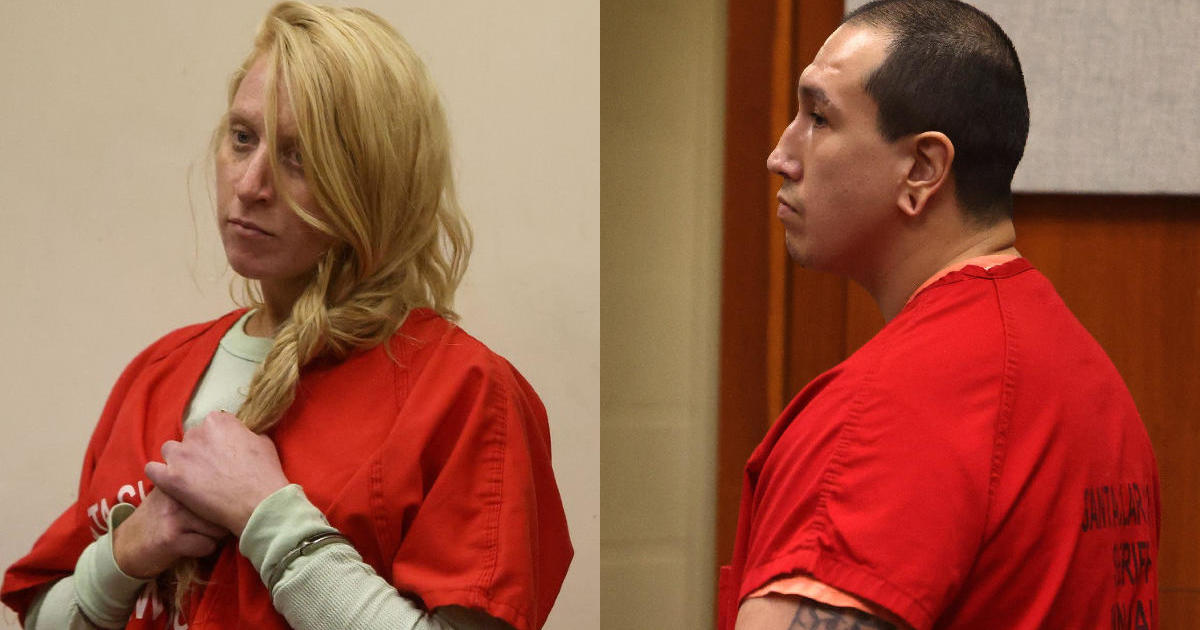Closing Arguments Begin In Richmond Gang Rape Trial
MARTINEZ (CBS SF) -- A prosecutor told jurors in a Martinez courtroom Wednesday that a mixture of physical evidence and witness statements all paint a clear picture of a 20-year-old Pinole man's guilt in a brutal 2009 gang rape of a 16-year-old girl at Richmond High School, despite the defense's attempts to minimize his involvement.
Both Marcelles Peter and Jose Montano, 22, of Richmond are charged with rape in concert, forced oral copulation in concert and sexual assault with a foreign object.
The charges stem from the October 2009 gang rape that occurred in a darkened courtyard on campus the night of the school's homecoming dance.
If convicted as charged, both defendants face life in prison.
The bulk of the evidence applies to both defendants, and they have been tried in the same courtroom. However, each defendant has his own jury, which will deliberate separately.
On Wednesday, Peter's jury heard closing arguments from Deputy District Attorney John Cope and from Peter's attorney, Gordon Brown.
The jury for Montano will hear another set of closing arguments on Thursday.
"What Peter did as a direct perpetrator and an aider and abettor was criminal, not just despicable," Cope said during closing arguments in the trial Wednesday morning. "He's guilty."
Cope said the gang rape involved at least six alleged perpetrators and about 20 bystanders who did nothing while the victim was beaten, raped and robbed.
Police found the victim, referred to in court as Jane Doe, more than two hours after the attack began after a passerby called 911, the prosecutor said.
She was taken to a hospital with numerous injuries and a near-fatal blood-alcohol level of .35 percent, according to Cope.
Two of Peter's co-defendants in the case, Manuel Ortega, 22, and Ari Morales, 19, are now serving 32-year and 27-year prison sentences, respectively, in exchange for plea deals they reached with the Contra Costa County District Attorney's Office.
Peter and Montano are the first two defendants in the case to stand trial, while another two defendants await trial on lesser sexual assault charges.
Cope said Peter, who was a minor at the time of the assault, first attempted to minimize his involvement in the crime but ultimately admitted to police that he groped the victim's private parts while she was unconscious and stood by as she was savagely beaten and raped.
Peter sat emotionless next to his attorney in court today as he watched the jury listen to the prosecutor's recounting of evidence in the case.
Brown, during his closing arguments this afternoon, reminded the jury that while several of the witnesses in the case remembered seeing Peter at the crime scene, none could recall him assaulting the girl.
The attorney also said that a witness was lying when he told police that Peter bragged about penetrating the victim with his fingers and taking pictures while she was assaulted.
Brown argued that Peter's own admission to police that he fondled the girl was a forced confession that came at the end of a hostile "interview-slash-interrogation" in which the detectives involved were determined to get a confession out of the teen.
"That pressure kept being applied until Mr. Peter became defeated," the attorney said.
"He didn't deny being there, but (police) had to make him a participant. He became liable and responsible for the acts of the others," he said.
Rebutting those arguments, Cope said that while Peter's direct participation in the crime may have been less than that of other men and boys at the scene, he is equally guilty for what happened to the victim under California law.
"Mr. Peter knew what was going on, and knowing what was going on, did what he did," he told the jury.
Cope reminded the jury of the physical evidence—including Peter's DNA found both on the inside and outside of a used, broken condom at the crime scene that included Jane Doe's DNA—as well as witness statements and Peter's own statements linking him to the crime.
He cited testimony from David Stockwell, a DNA expert who examined evidence from the crime scene and said Peter's DNA found inside the condom "most likely" came from semen.
Brown, however, argued that his client's DNA could have been carried onto the condom from another surface.
He noted that the majority of the DNA found on the condom matched one of Peter's co-defendants, John Crane, and that Peter's DNA wasn't found on the victim's body.
(Copyright 2013 by CBS San Francisco and Bay City News Service. All rights reserved. This material may not be published, broadcast, rewritten or redistributed.)



